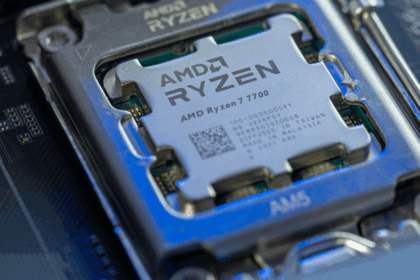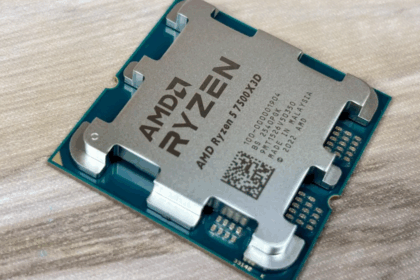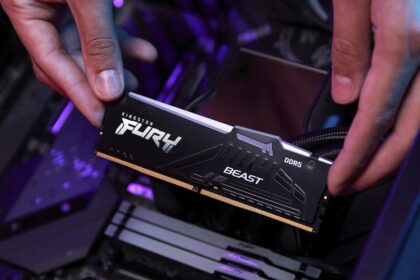Since the launch of Ryzen processors in 2017, AMD has been steadily reclaiming ground in its long-running rivalry with Intel. New figures from Mercury Research reveal that in the desktop CPU market, AMD has grown nearly 10% year-over-year, reaching a 32.2% share.
These numbers cover the second quarter of 2025 and represent a gain of over 4% compared to the first quarter—enough for Ryzen chips to secure just over one-third of the market. Intel still holds the lead by a wide margin, but AMD’s recent momentum is hard to ignore.
This surge follows the introduction of the Zen 5 architecture, powering the Ryzen 9000 series released about a year ago. These processors put strong pressure on Intel’s Core Ultra 200 lineup, offering better performance alongside improved power efficiency. And it’s not just the newest models winning buyers—previous Ryzen generations continue to appeal to many PC builders and upgraders.
Fall in notebooks and growth in data centers
While AMD has made impressive gains in the desktop CPU market, the same can’t be said for laptops. Despite releasing capable chips like the Ryzen AI 300 series and the high-performance Ryzen AI Max lineup, the company lost 2% market share between the first and second quarters of this year—slipping back to the same position it held a year ago.
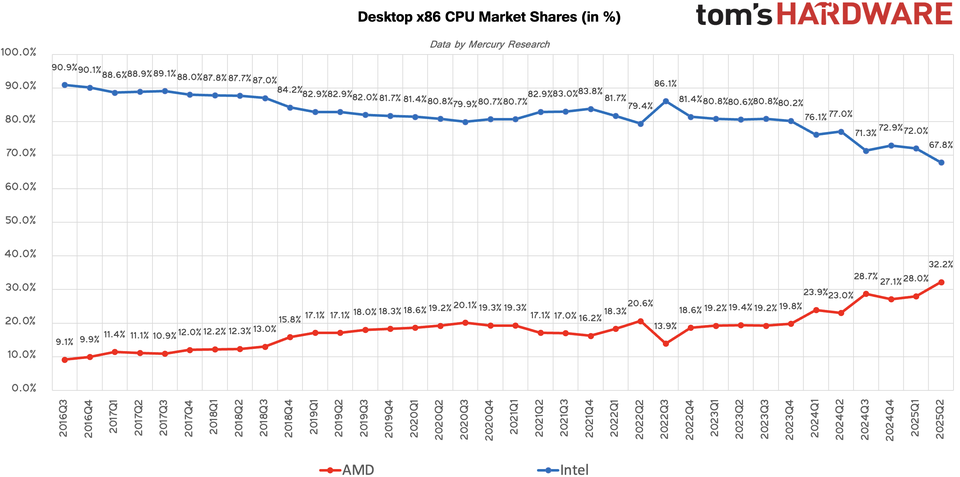
AMD had been steadily gaining ground in notebooks since late 2022, with growth continuing into the end of 2024. But since then, momentum has slowed, bringing its share back to 20%, the same as in the second quarter of 2024.
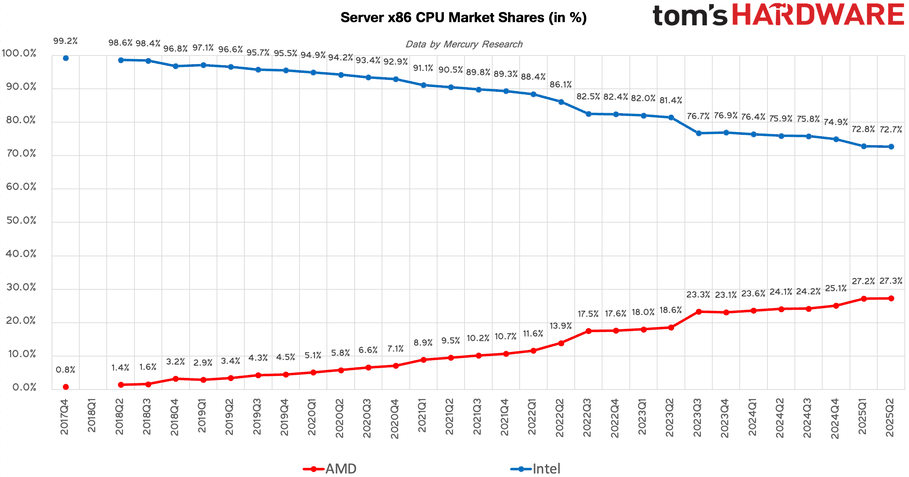
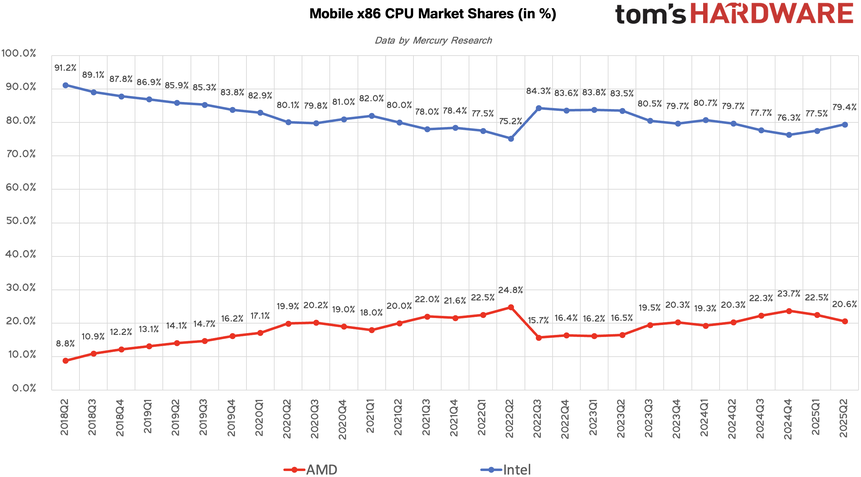
The picture looks brighter in the data center space. Mercury Research’s latest report shows AMD steadily climbing since 2018, reaching 27% share in 2025—a jump of nearly 3% in a year. Another recent study paints an even more impressive picture, estimating AMD’s share at close to 40%, with sharp gains during 2025.
Whichever numbers you follow, one thing is clear: AMD’s footprint in multiple processor markets has expanded significantly in recent years, giving the company plenty of reasons to celebrate.







